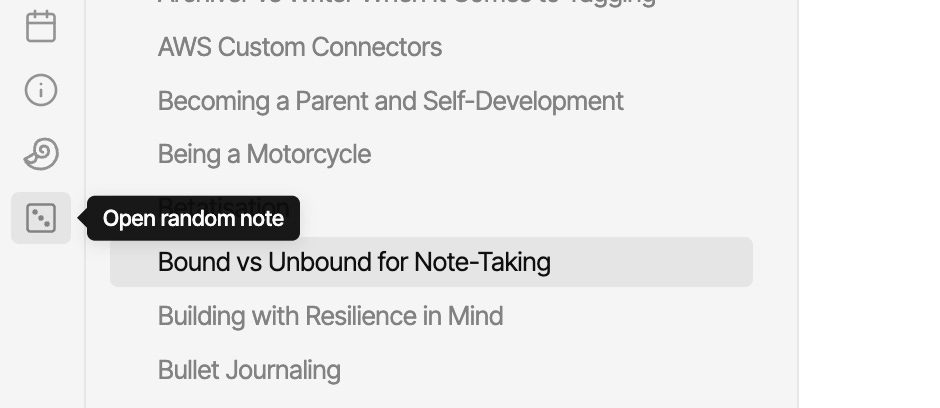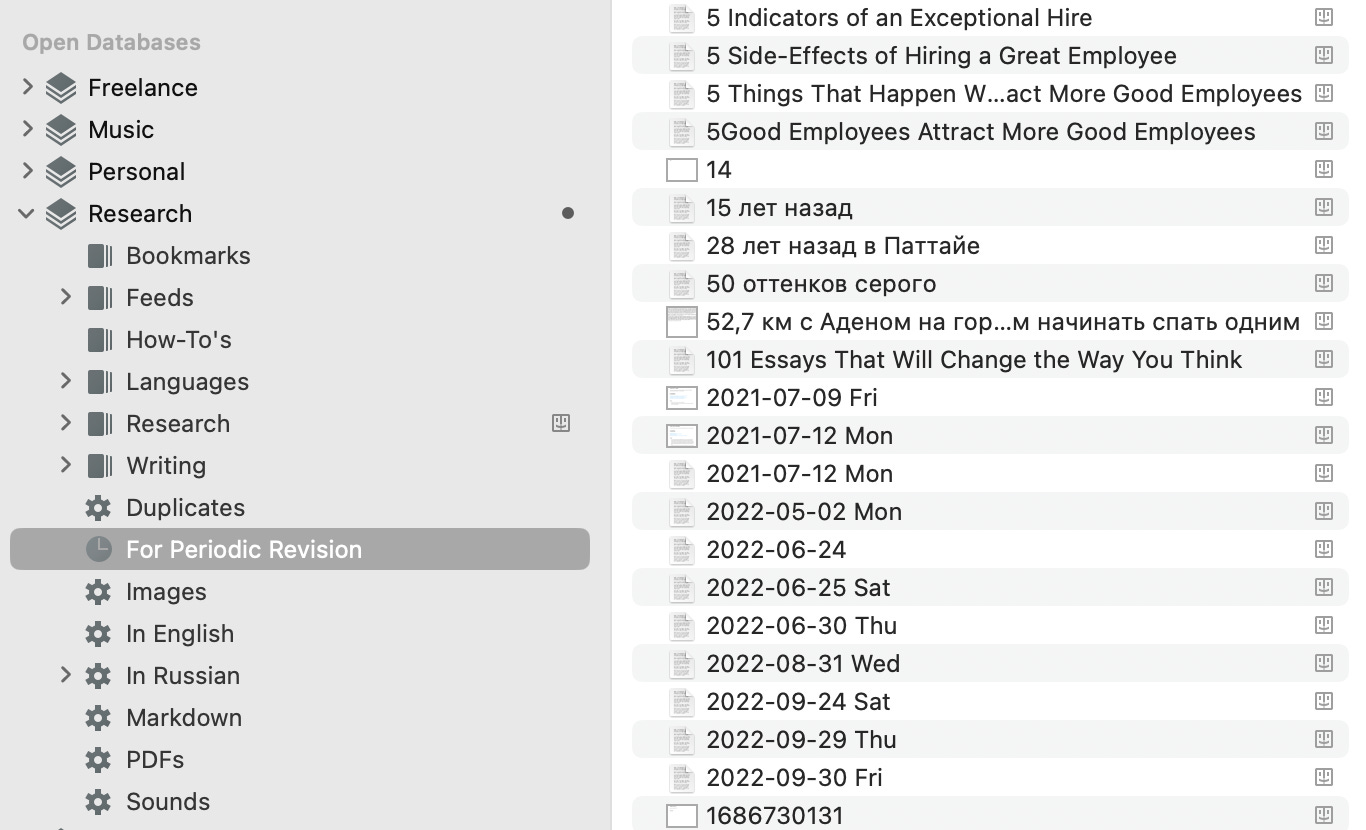How to Turn Notes-Revision Into a Micro-Habit
No periodic revision means no knowledge acquisition. I'm sharing some of my tactics.
I’ve heard folks complaining about their note storages turning into black holes of paper and files thrown in there, never resurfacing. This is a concern as we get into PKM with a particular outcome in mind rather than for the sake of note-taking alone.
Because of this “one-way-ticketness”, we tend to create occasional duplicates. Things you deal with daily increase the statistical probability of such collisions. But, although it might have a negative connotation, it’s also a good omen. It means you’ve stumbled upon something worth developing further. A topic that mattered to you more than you thought it was.
However, the fact that you forgot you captured the idea earlier indicates that it’s not yet an integral part of your personal knowledge graph. Therefore, you can’t engineer any knowledge out of it.
It’s like looking up the same word in a dictionary several times before it sticks. At first, you couldn’t remember you’d seen it before. Next time, you might remember what letter it begins with. The third time, you might remember 80% of its letters or strokes, etc. Regardless, becoming proficient in any language requires spaced repetition.
Remembering as much vocabulary as possible is necessary but not sufficient. Words aren’t hanging in the air unattached to anything. Instead, languages can be easily depicted as ontologies where combinations of words create other words, forming more complex expressions, such as “presumption of innocence”, “没有用“ or “Besichtigungsbegleitung”. The larger the graph, the farther and longer you can traverse it, making your command of the language increasingly more sophisticated.
The same goes for your notes. The more you review them, the more core concepts you can remember and the more you can link them together to form bigger, more complex thought structures.
This is the “secret” of most prolific writers. Creative juices aren’t pouring onto the stone tablets as if transcribing God’s narration. The creative process begins with collecting the dots, reviewing and connecting them into progressively higher-order constructs until they turn into snippets of text ultimately rearranged in a linear form: the book.
Making Notes-Revision a Micro-Habit
David Allen, the author of the GTD (Getting Things Done)1 productivity system, strongly emphasises the importance of periodic reviews: daily, weekly, monthly, and yearly. Without them, your to-do list turns into that same black hole, and the system falls apart. You become numb to the vortex of outstanding projects and tasks. In the best-case scenario, you spin up a new shiny system and try anew. In the worst-case scenario, you throw the towel, thinking everything’s screwed beyond repair.
I’ve previously recommended David’s book as one of your tabletop staples.
The same happens to your notes vault by extrapolation: no periodic revision means no acquired knowledge.
But…
It’s paramount that you don’t consider this a chore. After all, we’re not dragging our feet to lift weights for an hour. A few minutes every day or every week in a comfortable chair will exceed your expectations, feeding back into your motivation to review, enrich, and connect your notes even more. Gamification.
Personally, I love the process, and from the previous issues of the newsletter, you know I’m using a fleet of synchronised tools to engineer my knowledge. Today, I’d like to showcase how you can set up the revision process in a few of them: Obsidian, DEVONthink or a vanilla task manager.
Spaced Repetition in Obsidian
This is my favourite place to review notes because it’s so low-friction and even provides that casino-like dopamine spike. The application comes bundled with a built-in plugin you can (de)activate, resulting in this lovely little sidebar icon shown below.

Once the note opens, I proof-read it, update the modification date, add/edit relevant tags, enrich or streamline it, and, most importantly, connect it to something it wasn’t connected to before either because I didn’t remember there was such a link or because new information cropped up and if it ties back to the document I’m currently looking at. I don’t have to do any of the abovementioned if it’s unnecessary, but I do more often than not.
Although the same button also exists in Obsidian’s mobile companion app, my ritual involves looking at the notes from the comfort of a laptop because I prefer typing to swiping or dictation. The bigger screen real estate also makes a noticeable creative difference2.
I roll the dice between 5 and 20 times throughout the retrospective, resulting in a classic spaced repetition or a deeper interweaving of the notes into the fabric of my knowledge. It’s not uncommon for creative impulses to occur at this stage. If this happens to you, why waste inspiration?
Periodic Revision in DEVONthink
I started using DEVONthink Pro in 2017 when I transitioned to a paperless office–an interesting story for another issue. My physical assets, such as paper, business contacts, emails, CDs, and USB drive content, had to be religiously transferred, tagged, labelled and classified using DEVONthink’s powerful information ingestion and processing tools.
Later, I started using it as a thoughts-capturing device, too. After migrating the bulk of my ideas management into Obsidian, I began using the indexing capabilities of the program to keep both tools in sync. The latest addition to the bidirectional synchronisation toolkit is the extension script that allows you to open a note in Obsidian and vice-versa.
Much like MacOS’s vanilla file explorer (Finder), DEVONthink lets you create smart groups (folders) but gives you way more power. Below is the example of a smart group that automatically displays Markdown notes from the “Research” database that haven’t been looked at in the last 60 days.

Here’s the result.

Turn It Into a Scheduled Task
Habits permanently form in our brain’s basal amygdala after about 21 days3. Charles Duhiggs’ famous “The Power of Habit”4 depicts the wheel of trigger → action → reward behind this phenomenon.
Every Sunday, my to-do list triggers a global weekly retrospective of everything I need to get on top of. The reward is the sentiment that I’ve avoided a constant mental nagging by the open loops occupying my brain’s limited RAM. Looking at inbox-zero is a weirdly intense joy. It means I can focus on pleasant and creative things starting Monday.
If bringing order into the bottomless pit of your notes intimidates you, setting up a recurring bite-sized weekly retrospective can be a low-friction entry point into this monumental task.

Today is Sunday, a perfect day to give your knowledge vault some sweet lovin’. The good news is you don’t have to do this alone. Comment on this article and join the channel’s chat if you work better as a group.
Allen, D. (2015). Getting Things Done: The Art of Stress-Free Productivity. Penguin.
Paul, A. M. (2021). The Extended Mind: The Power of Thinking Outside the Brain. Eamon Dolan Books.
Fox, C. (2015). Lifelong Writing Habit: The Secret to Writing Every Day.
Duhigg, C. (2014). The Power of Habit.



